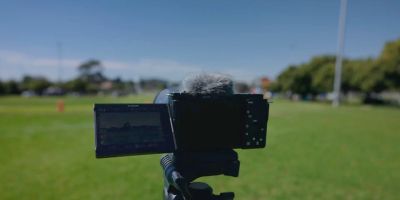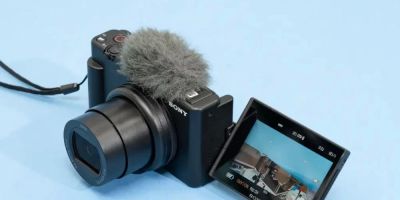How to Shoot Cinematic Photos with a DSLR: A Personal Guide
As someone who has always been fascinated by film and photography, learning how to capture cinematic photos with my DSLR has been one of the most rewarding aspects of my creative journey. The art of shooting cinematic photos is about more than just adjusting the settings on your camera—it's about creating a mood, telling a story, and capturing an emotion in every frame. Over the years, I've discovered key techniques that allow me to create stunning cinematic photos, and now, I want to share them with you.
1. Understanding the Cinematic Look: What Does It Mean?
Before diving into the technical aspects, it’s important to understand what we mean by "cinematic" in photography. Cinematic photos often look like stills from a movie—rich in color, dynamic in lighting, and full of mood. The first step in achieving this aesthetic is understanding the visual language of cinema. Movies often use techniques like shallow depth of field, dynamic framing, and dramatic lighting to evoke emotion, and these techniques can be applied to still photography to create a cinematic vibe.
For instance, when I first started exploring cinematic photography, I found that adjusting my camera settings to focus on a subject while blurring out the background made a huge difference. It mimics the look of a film camera and adds that professional touch that makes a photo stand out. It’s all about creating a scene that feels like it could be a moment frozen in a story.
2. Selecting the Right Lens for Cinematic Shots
When it comes to capturing cinematic photos, the lens you use plays a crucial role. I’ve experimented with various lenses, but I’ve found that a fast prime lens, like a 50mm f/1.8 or 85mm f/1.4, is perfect for creating that shallow depth of field that’s so often associated with cinematic images. These lenses allow you to isolate your subject from the background and create a beautiful bokeh effect, which adds to the cinematic aesthetic.
It’s not just about bokeh though—lenses with wide apertures also allow you to shoot in low light, which is essential for many cinematic looks. Whether I’m shooting portraits or landscapes, I always try to use a lens that lets in as much light as possible. This helps me capture rich details, even in darker environments, without having to increase the ISO too much.
3. Mastering the Rule of Thirds and Composition
Good composition is key to cinematic photos. One of the first things I learned is how to apply the rule of thirds, which divides the frame into a grid of nine equal parts. Placing important elements of your scene along these lines, or at their intersections, creates a more balanced and visually pleasing composition. But cinematic photography isn’t just about following the rules—it’s about breaking them too.
For example, I often experiment with off-center compositions, where I place my subject at the far left or right of the frame. This can create a sense of tension or imbalance, which adds a cinematic drama to the shot. I’ve found that playing with negative space and using leading lines (like roads, pathways, or walls) in my photos can also help guide the viewer’s eye and create a narrative within the frame.
4. Lighting: The Heart of Cinematic Photography
Lighting is absolutely crucial when you’re aiming for a cinematic look. I cannot stress enough how much lighting can transform an image. Cinematic photos often feature dramatic lighting that creates mood and adds depth to the scene. Overhead lights, side lighting, and natural light sources like windows all help shape the way a scene looks and feels.
One of my favorite lighting techniques is using the "golden hour"—that beautiful time just before sunset or just after sunrise when the light is soft and warm. During this time, I always make sure to position my subject so that the light hits them from the side, creating shadows that enhance their features. When shooting indoors, I try to use soft, diffused lighting, which mimics the kind of gentle light you often see in films.
5. Color Grading for That Cinematic Film Look
Color grading is a technique I’ve embraced wholeheartedly in my pursuit of cinematic photos. After taking a shot, I often spend time in post-production adjusting the colors to match the mood I’m trying to convey. For example, I love the look of teal and orange, which gives the photo a vibrant, high-contrast look that’s often seen in blockbuster films.
In my editing process, I focus on boosting the contrast, reducing the highlights, and sometimes adding a little warmth to the shadows. This gives the photo a more cinematic feel. I also like to use selective color grading, where I tweak specific color ranges to bring out certain emotions. For example, cooling down the blues in a scene can give it a melancholic, somber tone, while warming up the reds and oranges can evoke a sense of warmth and comfort.
6. Experimenting with Movement and Angles
One of the things that make movies so captivating is their dynamic nature. Cinematic photography doesn’t have to be static either—it can involve movement. I’ve experimented with using slower shutter speeds to capture movement in a scene, like a car driving by or a person walking. This creates a sense of action and life in the photo.
Angles are another area where I like to get creative. Whether I’m shooting from a high vantage point or getting down low to the ground, I’ve found that changing up my perspective can give the photo an entirely new feel. Shooting through objects, like doorways or windows, can also add layers of depth to the frame, which is a common technique in cinematic photography.
SEO Title: How to Shoot Cinematic Photos with a DSLR: Tips for Stunning Shots SEO Keywords: cinematic photography, DSLR tips, shooting cinematic photos, photography techniques, DSLR camera settings SEO Description: Learn how to shoot cinematic photos with your DSLR by mastering key techniques like lighting, composition, and color grading. Capture stunning shots today!




